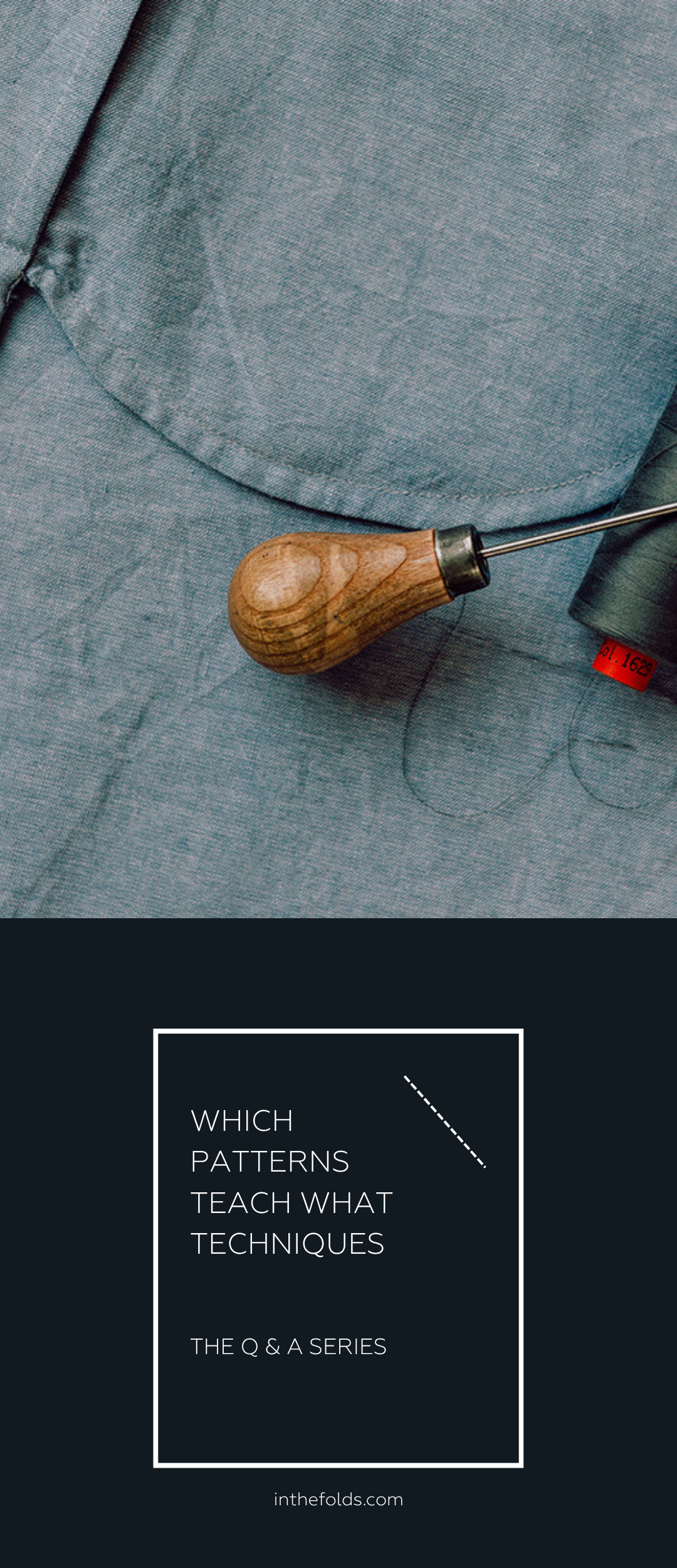THE Q & A SERIES
SEWING KNITS: INDUSTRIAL VS DOMESTIC TECHNIQUES
Hi Emily,
How do I achieve the techniques I find in my RTW knits while sewing at home?
Thanks,
Rosa
Hi Rosa,
One thing many sewists strive for is to learn how to make their homemade garments look as finished as ready-to-wear. (Well, not all ready-to-wear, we have to admit… but you know what we mean!) We’re not embarrassed to admit that you can often find us turning a store-bought garment inside out to figure out how a particular finish was achieved!
So, we think it’s a great idea to look in your wardrobe for inspiration!
One of the best ways to learn about different seam finishes and construction techniques is by looking at ready-to-wear garments in your wardrobe or a shop, and taking photos for future reference if you see a finish you like.
This month in Curated by ITF, we’re looking at all the techniques you need for sewing knits at home on a domestic sewing machine.
In industry, they use specialist machines to achieve some of these techniques and of course, it’s unlikely you’ll have access to those kinds of machines, but that doesn’t mean you can’t get the same finish (or at least similar) at home!
Read on to find out about two industry techniques that we like, and we’ll show you how to mimic these techniques while sewing at home on a budget!
Sewing knit seams
In industry, stretch seams are sewn on an overlocker. Four threads are used to maintain the stretch of the garment, with a 6mm (1/4in) seam allowance.
At home, on a regular sewing machine we usually sew a stretch stitch (on some machines, this is called lightening bolt stitch or triple stitch) or a narrow zig-zag stitch, with a 1cm (3/8in) seam allowance. We then finish the edges with a zig-zag stitch, overlocker or an edge foot.
If you have an overlocker, you can, of course, sew the seams directly on the overlocker. However, you must change the seam allowance to 6mm (1/4in) and use four threads to stitch the seam, rather than three.
It’s important to make a sample first, and pull the seam to ensure the overlocker has the correct tension and the seams will hold as they stretch on and off your body.
Hemming Knits
In industry, an industrial coverstitch machine is used to sew the hems of a stretch garment.
At home, we use a twin needle to provide a double row of stitching on the front and a zigzag stitch on the back. You can also choose to overlock the hem first, but this is not necessary as knit fabrics don’t tend to fray. In this month’s Curated by ITF Issue we encourage you to make two samplers to test these techniques so you can decide what works best for you and the fabric you’re working with.
This simple, but effective knit fabric finishing technique saves home sewists both money and space! A stretch twin needle costs around $8 AUD, whereas a domestic coverstitch machine ranges between $1200 - $2000 AUD! (Of course, if you’ve got the budget and the storage space, feel free to invest if you think you’ll get the benefit of it.)
Take a look in your wardrobe
You might find it interesting to see how your RTW garments differ from home sewing approaches. But you shouldn’t feel like you need to invest in expensive technology to be able to achieve it at home. With the right guidance and techniques, we’re certain you'll be pleasantly surprised by the amazing results you can create at home on a domestic machine!
If you’d like to learn more about sewing knits, we’d like to invite you to join us in Curated by ITF this month. We think it’s high time sewists kicked the fear of stretch fabric to the curb and we’re here to help you do just that with a two-part knit fabric series!
This month we’re working through all the knit fabric skills and techniques you need to know to confidently sew stretch on a regular sewing machine, including machine settings, tools, stitch types and more.
Then we’re applying this information through the use of samplers. This is a learning approach that we love to use at In the Folds as it gives you the opportunity to practise and fine-tune skills before applying them to a wearable garment.
Once you’ve worked through the content for the month you’ll be ready to kick on to part two - a T-shirt pattern that we know will become a go-to in your wardrobe and sewing regime!
Happy sewing,
Alys
RESOURCES MENTIONED IN THIS ISSUE
The first in a two-part stretch fabric series, the Sewing Knits Skills Kit is currently available with a Curated by ITF subscription for the month of March 2023. More information can be found here.
Stay tuned for next month’s knit T-shirt pattern!
For more issues of the Q & A series, you can check out the archive here.
WHAT YOU’VE BEEN MAKING
Acton dress made by @stitchedbycaitlin








